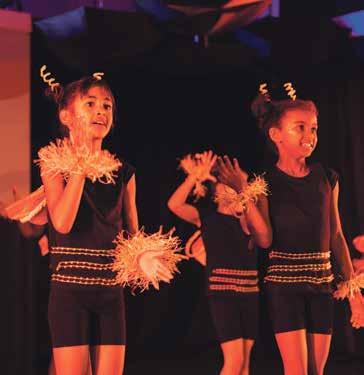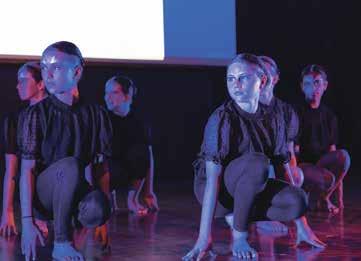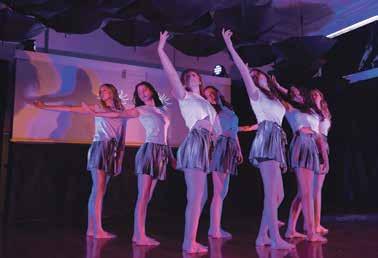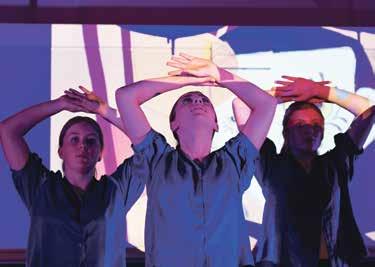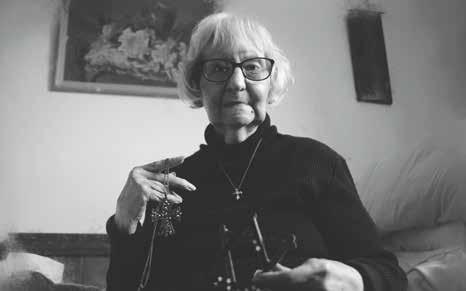
9 minute read
Theft
from Raglan Chronicle
Small Gestures: Alison Simpson - room #28
Elisabeth Denis wants to tell the stories of the residents at Raglan Rest Home and Hospital. Elisabeth wants to show up for someone every month and bring awareness to the community about caring for our elderly and appreciating their memories and wisdom.
Advertisement
When I entered room #28, her perfect white bob was resting on her pillow, eyes closed, and her mind seemed to be located on a peaceful cloud somewhere unchartable.
Westlife was blasting to the max, consuming the entirety of the room. I swear the corridor was as quiet as an empty church before I entered. The decor was punctuated by an amalgamation of crucifix, countless memorabilia of all sorts, and one lonely Star of David held on the wall with Blu-tack. Half asleep and puzzled by the sight of an intruder, I pressed pause on her black CD player to explain myself.
The contrast between the crosses and the star was elucidated: a Jewish mother and a Protestant father. At the innocent age of four years old, her mother demanded for her choice to be made. The innumerable crosses in the room and the golden Christian emblem on her neck tells the answer. “I had to cope with a lot of things most young girls don’t have to cope with. Religion kept me safe. I pray every night and if I have a spare minute, I pray. I believe that’s what spare minutes are for, to pray.”
Alison grew up in Onehunga at the end of WW2 when the wharf was mostly populated by Māori fishermen. Young girls were forbidden to approach, speak to, or speculate about Māori people; let alone study te Reo Māori. The prohibited world of Māori culture became a fascination for her, which was translated in to her drawings: often depicting Māori symbols and portraits.
School was preferable for Alison because home wasn’t a harmonious place to inhabit. Reading books was interdicted by her mother, for she feared her daughter would learn too much about the world. Despite the rigidity of the matriarch, Alison was determined to pursue her literary urges. The wardrobe was altered to an unseen secretive library, a cavern of silence. She was deeply interested in cultural differences. In particular, the Indian caste system (the idea of the lowest caste crushed her heart with empathy) and their arranged marriages which were outside of her understanding of love. Tragically, she subsequently found herself in the same position: her mother cherry-picked her daughter’s husband, an English man who was eleven years older than Alison.
At eleven years old, in the middle of the night, strange noises led her all the way to the bathroom to find her mother in a pool of blood, like she’d never seen before. The immediate order was to hold out her hands. He was as big as her two hands and wrapped in a caul. She’d previously read about the rarity of caul births that ignited cultural beliefs around newborns who could possibly hold significant powers. The veil was broken with her small fingers and just like that, she helped deliver her brother. Without any preparation at all, it seemed so natural to her. After the event, the only profession she dreamed of was nursing, and that’s exactly what transpired.
Today, Alison delivers daily cursive writing notes to the cook and nurses at the rest home to show appreciation. “As a child, I wasn’t appreciated for the goodness I did, and so I'm trying to break the circle and put more effort in loving others better.”
WEL comes aboard to remove risk for yachts
by Edith Symes
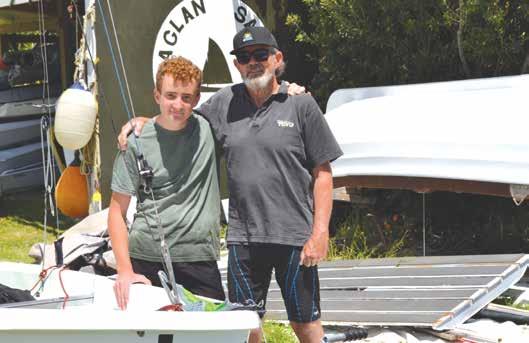

Keen young yachties like Harry Carter, pictured above with Ross, are delighted the sailing club continues to operate courtesy of the work done by WEL Networks.
Yachties are set for smoother sailing now that a Waikato-based electricity company has come to the rescue and buried dangerous overhead power lines around their Lorenzen Bay clubhouse.
“It was a constant worry,” says Raglan Sailing Club committee member Ross Henderson who wrote to WEL Networks recently, alerting it to the threat under which the club operated.
He pointed out they were continually trying to avoid contact between aluminium masts and overhead power lines in the marine reserve area.
“We were struggling to operate safely,” Ross told the Chronicle. “We had to have a safety person focused on managing the danger every club day or event, and we were weighing up whether to continue to operate.”
As soon as WEL came out to assess the situation and saw the obvious risk it didn’t hesitate to get the job done, says Ross.
The club never knew at the time just how big the task to underground the powerlines was, he adds. The project’s costs could have been in the order of $100,000 and “no way on God’s earth could we afford to do it”.
There were both private properties and a marine reserve area to be considered, he explains, in a project involving directional drilling under the estuary. This required various consents and approvals as well as detailed environmental reporting.
The club’s now delighted at the results of the completed project, not least of which means its new Quest sailboat – among others with taller high-performance rigs – can get safely in and out of the water.
“We’ve always been about safety,” Ross insists.
Local yachties formed the sailing club 12 years ago after finding their “flagship” Coast Guard cutter – once stored in the Scout Hall shed in Cliff St – was in danger of being carted off to a Hamilton club.
Since then the club’s accumulated a fleet of more than 20 boats including old Optimists for the young ones, newer open-backed skiffs, and Lasers. It also has a chase boat for safety although, Ross says, there’s a need for one with a more reliable outboard motor.
He describes the assistance from all parties in the project as phenomenal, thanking WEL Networks for coming to the party, Bayonne Construction for the directional drilling and Tuatahi First Fibre for installing the optical cables.
His thanks also go to ward councillor Lisa Thomson, Tainui hapu and Ngati Mahanga for ongoing support. “It makes me proud to be a part of this community,” he adds.

Small gestures can make big differences.
If you want to get involved at Raglan Rest Home and visit or even write letters especially to those without family please get in touch with Raglan Rest Home and Hospital.
Because we are — All Under the Same Sky
byAmy Rivers
This weekend the Whaingaroa Youth Movement were back to the Town Hall with their latest and 20th show, All Under the Same Sky.
As if in reflection of the performance, which felt like a break in the rain, the skies cleared and we were offered a gap in the clouds. With the stage roofed in upside down umbrellas, it was as if the performers extracted us from the weather of life to immerse us in their understanding of what it means to live in a world that is constantly changing.
Opening with a sequence to Imogen Heap’s ‘Wait it out’, the first group of dancers used their movements to pose questions reflected in the lyrics, “Where do we go from here?”, an apt contemplation after the last few years of disruptions, but also of those moments in time, especially when we are young, and ask ourselves who we are or what next?
Subsequent music, visuals and choreography suggested the value of collaboration, support for one another and companionship as we walk these questions together, but also the importance of making your own path - for example, though cohesive, each dancer performed in their own unique way, often in pairs or smaller groups using deliberate variations on the same movements.
With “Running out of Patience”, the familiar feeling of being in life’s waiting room was so clearly encapsulated, with the dancers running, but not going anywhere and alluding to the hands of a clock that move forward — only to move back again. Haven’t we all felt that we should be progressing but somehow we’re not, that we are blocked or even moving backwards? I remember this feeling being strong when I was younger, but recognise how especially relevant it is after the recent turbulence we are all now recovering from.
“Burden”, a sequence to Ibeyi’s ‘I carried this for years’ offered a stunning visual image of what it is like to carry the impatience and confusion of living (and of youth), along with demonstrating how the WYM creates community with the older dancers working with the younger. This somewhat heavier interlude was followed by an upbeat, joyous sequence “You do You, I’ll do Me”, throughout which the glowing faces of the audience mirrored those of the beaming performers, who brought so much play to their movements. Even more levity came next with the youngest dancers in their gorgeous sequence that reminds us of how simple it is, to just enjoy being - and that they, our youngest, are still some of our greatest teachers — we must put down our burdens in order to find joy.
The concept of finding the threads of who we are within the fabric of us all and the forever changing world around us was clear through the closing three sequences, as the dancers moved in ways that recognised the changing, becoming and adapting required of us as we grow into ourselves - flowing together, moving as one and yet also as individuals.
The show concludes with an uplifting atmosphere and the suggestion that as we are moved by the weather of living; each of us has the capacity to adapt and choose our path both by connecting to what makes us individuals, and what makes us the same. It’s not all sunshine, but we can make it.
The Whaingaroa Youth Movement, led by the brilliant Patti Mitchley and her dedicated team, supported by an expertly curated soundtrack and inspired animation by Ella Green, manage to express their own experiences - of being young people in this world, and yet cleverly at the same time the experiences, thoughts and emotions we all feel as humans on this earth. We are together, yet individual, we feel, move, and express ourselves differently, but we are all under the same sky. All images thanks to Molly McCabe.
